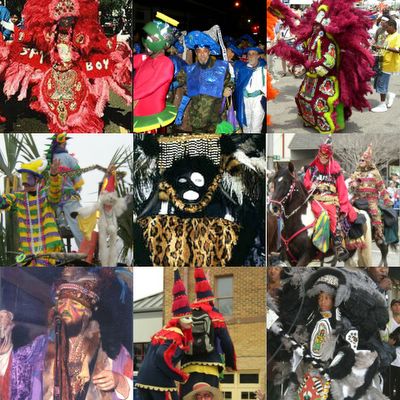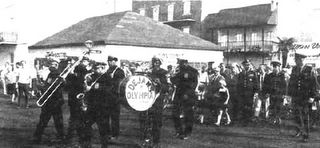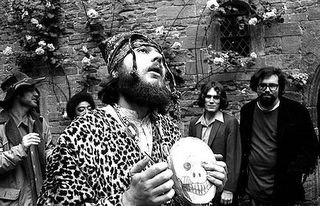
Last Saturday, I went to a cold and windy New Orleans for the annual
Krewe du Vieux parade and public party that followed at the State Palace Theater on Canal Street. The various thematically irreverent, if not subversive, sub-krewes, their hilarious and/or salacious hand-made floats, and numerous brass bands followed a meandering path (shown on their web site as the “projected path”) from the Faubourg Marigny neighborhood into and through the French Quarter. Sizeable crowds lined the route despite the cold, enjoying the spectacle and getting various throws (beads, trinkets, funny money) randomly and inaccurately dispensed by the inebriated, costumed wanderers.

Soul Rebels passin' by
It was reassuring to see the many brass bands rolling with the parade. Clearly, there were fewer than in last year’s run, which had around twenty, as I recall; and, some of the bands this year were combined elements of bands not up to their full individual strength and also some rag-tag, thrown together aggregations that would not have otherwise seen the streets had this not been a post-flood event. Anyway, one notable I should point out in the collage shots above is the outstanding, out marching
Kirk Joseph.
The party at the Palace was great. I missed both the first band, The Claim Jumpers, who I was told were good, and the last band, Juice (I could no longer feel my legs by that point and caught a cab). But, I was there for all that
Ivan Neville’s Dumpstaphunk dished out; and a steamin’ heap o’ funk it was, too. Ivan (son of Aaron), in my so humble opinion, has re-infused the Neville Brothers’ band with da fonk they somehow mislaid. And his side band is down and dirty. You know you're in for an extreme bottom end affair when there are two bass players on stage. In the group are his cousin, Ian (Art’s son) on guitar, bassist/guitarist Tony Hall, bassist/vocalist Nick Daniels, and a drummer whose name I forgot (not Raymond Weber - sorry – he’p me somebody). Also sitting-in off and on was another funky guitarist, Renard Poche. Ivan played B-3 and clavinet and sang lead all night. You can hear some of their live sound at the linked site. Ivan summed up the spirit of the whole thing at one point, when he said, “I thought I might never get to say this again; but
HAPPY MARDI GRAS y’all.” Yeah, you right.

Ivan and Renard dumpstaphunkin'





















